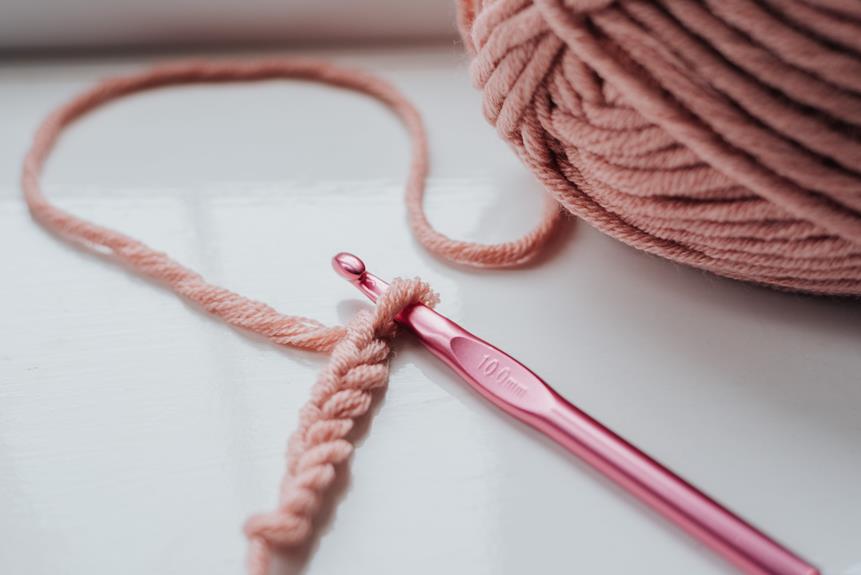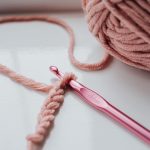Are you tired of struggling with fabric fasteners that just won't hold? Double sided hook and loop may be the ultimate solution you've been searching for.
This innovative fastening system offers a secure grip without the need for complicated closures or hardware.
In this exploration, we will delve into the advantages and limitations of double-sided fastening, compare it with other fabric fastening options, and examine its industrial applications.
We will also consider the environmental impact and sustainability of this solution, as well as provide tips for maximizing its effectiveness.
By the end, you'll have a comprehensive understanding of whether double sided hook and loop truly stands as the ultimate fabric fastening solution.
Key Takeaways
- Double-sided hook and loop fasteners offer versatility in various applications and can be easily customized for different sizes and shapes of fabric.
- They are cost-effective and durable, with a longer lifespan compared to other fabric fastening options like buttons or zippers.
- In industrial applications, double-sided hook and loop fasteners provide efficient assembly, secure bonding in demanding environments, and enhanced productivity and efficiency in manufacturing processes.
- They also contribute to easy maintenance, enhanced safety, and reduced environmental impact, making them a reliable and sustainable fabric fastening solution.
History of Hook and Loop
The history of hook and loop dates back to the 1940s when Swiss engineer George de Mestral invented this fastening system after being inspired by the burdock burrs sticking to his clothing during a hike. This simple yet ingenious idea led to the evolution of what we now know as the hook and loop fastener. Initially patented in 1955, the design features two components: a lineal fabric strip with tiny hooks and another with smaller loops, which adhere when pressed together and can be pulled apart when peeled with a degree of force.
The evolution of hook and loop has seen advancements in the design features, resulting in various types like double-sided hook and loop. The double-sided version offers the convenience of fastening objects to both sides of a surface, providing a secure bond. The design features of double-sided hook and loop include a strong adhesive backing on both sides, ensuring reliable attachment to surfaces. This innovation has expanded the application of hook and loop fasteners, making them a versatile solution for a wide range of industries.
Advantages of Double-Sided Fastening
Looking for a strong and versatile fastening solution for your fabric projects? Double-sided hook and loop fastening offers numerous advantages that make it an ideal choice for a wide range of applications. Here are some key benefits to consider:
- Versatility: Double-sided fastening can be used in various applications, including clothing, accessories, upholstery, and more.
- Durability: The strong adhesive and sturdy hook and loop design provide long-lasting hold, ensuring that your fabric projects stay securely fastened over time.
- Ease of Use: With its simple peel-and-stick application, double-sided hook and loop fastening is easy to use, making it a convenient choice for both professionals and DIY enthusiasts.
- Adjustability: The reusability and adjustability of double-sided fastening make it an excellent option for projects that require frequent opening and closing, allowing for easy adjustments and modifications.
- Environmental Impact: Some double-sided hook and loop fastening solutions are designed to be reusable, reducing waste and environmental impact compared to traditional fastening methods.
These advantages make double-sided fastening a top choice for those seeking a reliable, durable, and environmentally friendly fabric fastening solution.
Limitations of Double-Sided Fastening
If you're considering double-sided fastening as a fabric solution, it's important to be aware of its limitations in certain applications. While double-sided hook and loop fastening offers many advantages, such as reusability and ease of use, it also has limitations that need to be considered.
One of the main limitations is its reduced effectiveness in wet or moist conditions. The fastening strength can be compromised when exposed to moisture, making it less reliable in such environments. Additionally, the bulkiness of the fastening system can be a limitation in applications where minimal thickness is essential.
Moreover, in high-temperature environments, double-sided fastening may not perform optimally as the adhesive used in the fastening system can lose its effectiveness. In some cases, the hooks and loops can also wear out over time, especially with frequent use, reducing the fastening strength.
Considering these limitations, it's important to explore alternative fastening solutions for applications where double-sided fastening may not be suitable. Innovations in adhesive technology and fastening designs continue to address these challenges, providing more versatile and reliable fabric fastening options for various applications.
Comparison With Other Fabric Fastening Options
When considering fabric fastening options, it's important to weigh the strengths and weaknesses of each.
Additionally, you'll want to take into account the cost-effectiveness and durability of the different options available.
These factors will help you make an informed decision on the most suitable fabric fastening solution for your specific needs.
Strengths Vs. Weaknesses
When comparing double sided hook and loop fastening with other fabric fastening options, three key strengths stand out.
- Versatility: Double sided hook and loop fastening can be used in a wide range of applications, from clothing and accessories to industrial and medical equipment.
- Reusability: Unlike some alternatives such as zippers or snaps, double sided hook and loop fastening can be opened and closed multiple times without losing effectiveness.
- Customization: It allows for easy adjustments and customization, making it suitable for various sizes and shapes of fabric.
- Lightweight: Compared to alternatives like buttons or buckles, double sided hook and loop fastening adds minimal weight to the fabric.
- Quiet operation: Unlike options such as Velcro, double sided hook and loop fastening provides a quieter fastening solution, making it ideal for situations where noise is a concern.
Cost-Effectiveness and Durability
Double-sided hook and loop fastening offers superior cost-effectiveness and durability compared to other fabric fastening options. A cost analysis reveals that while initial costs may be slightly higher than some traditional options, double-sided hook and loop fastening proves to be more cost-effective in the long run due to its extended product lifespan.
Unlike adhesives, which can degrade over time and lose their effectiveness, double-sided hook and loop fastening maintains its strength and functionality through numerous cycles of use. Additionally, when compared to traditional methods such as buttons or zippers, double-sided hook and loop fastening often requires less maintenance and is less prone to wear and tear.
This makes it an ideal choice for those seeking a durable and cost-effective fabric fastening solution.
Industrial Applications of Double-Sided Hook and Loop
How can double-sided hook and loop revolutionize your industrial applications?
Double-sided hook and loop fasteners offer numerous benefits for industrial applications, making them an ideal choice for fabric bonding in various settings. Here are five ways double-sided hook and loop can enhance your industrial processes:
- Efficient Assembly: Double-sided hook and loop fasteners provide a quick and efficient method for assembling industrial products, reducing production time and labor costs.
- Secure Bonding: These fasteners offer strong, durable bonding, ensuring that fabric components stay firmly attached even in demanding industrial environments.
- Customized Solutions: Double-sided hook and loop can be tailored to fit specific industrial needs, allowing for versatile applications across different manufacturing processes.
- Easy Maintenance: With simple reusability and maintenance, double-sided hook and loop fasteners contribute to cost-effective and sustainable industrial practices.
- Enhanced Safety: By providing a reliable and secure fastening solution, double-sided hook and loop contributes to the safety of industrial products and processes.
Incorporating double-sided hook and loop into your industrial applications can significantly improve efficiency, durability, and overall performance, making it a valuable solution for fabric bonding in diverse industrial settings.
Environmental Impact and Sustainability
When considering the environmental impact and sustainability of double-sided hook and loop fastening solutions, it's essential to explore material recycling options and the long-term ecological impact.
Understanding the potential for recycling and reusing materials can significantly reduce the environmental footprint of these fastening solutions.
Additionally, assessing the long-term ecological impact of using double-sided hook and loop can provide valuable insights into its sustainability.
Material Recycling Options
One important aspect to consider when evaluating material recycling options for double-sided hook and loop fasteners is the environmental impact and sustainability of the fabric. When considering the recycling options for double-sided hook and loop fasteners, it's essential to focus on sustainable production, circular economy, and eco-friendly materials.
Here are some key factors to consider:
- Sustainable production processes that minimize environmental impact.
- Circular economy approach that promotes the reuse and recycling of materials.
- Use of eco-friendly materials that are biodegradable or recyclable.
- Implementation of efficient recycling programs to reduce waste and promote sustainability.
- Collaboration with suppliers and partners to ensure responsible sourcing and recycling practices.
These considerations are crucial for ensuring that double-sided hook and loop fasteners contribute to a more sustainable and environmentally friendly future.
Long-Term Ecological Impact
The long-term ecological impact of double-sided hook and loop fasteners on the environment and sustainability is a critical consideration when evaluating their overall effectiveness. These fasteners can have a significant ecological footprint, especially when considering their disposal and end-of-life impact. Conservation efforts play a crucial role in mitigating this impact, with initiatives focused on reducing the use of non-biodegradable materials and promoting sustainable manufacturing practices.
| Ecological Impact | Conservation Efforts |
|---|---|
| End-of-life disposal | Reduce non-biodegradable materials |
| Manufacturing processes | Promote sustainable practices |
| Environmental impact | Support eco-friendly alternatives |
| Resource consumption | Encourage responsible consumption |
| Long-term sustainability | Advocate for circular economy |
Tips for Using Double-Sided Hook and Loop
For best results when using double-sided hook and loop, ensure that the surfaces are clean and dry before applying the fastening material. Here are some tips to maximize the effectiveness of double-sided hook and loop:
- Proper Surface Preparation: Clean the surfaces thoroughly to remove any dirt, dust, or debris that could interfere with the adhesive bond.
- Use Sufficient Material: Ensure that you're using an adequate amount of double-sided hook and loop to provide strong and secure fastening.
- Apply Even Pressure: When attaching the hook and loop, apply even pressure across the entire surface to ensure a solid bond.
- Allow Sufficient Adhesion Time: After applying the fastening material, allow sufficient time for the adhesive to bond properly before subjecting it to any stress or weight.
- Avoid Excessive Movement: Minimize unnecessary movement or adjustments after the hook and loop has been applied to prevent weakening the bond.
Frequently Asked Questions
Can Double-Sided Hook and Loop Be Used in Extreme Weather Conditions?
In extreme weather conditions, double-sided hook and loop fasteners offer extreme durability and strength. They are designed to withstand harsh conditions and provide excellent weather resistance, making them a reliable choice for various outdoor applications.
Are There Any Special Considerations for Using Double-Sided Hook and Loop on Delicate Fabrics?
When using double-sided hook and loop on delicate fabrics, consider fabric protection and compatibility. Ensure the hook and loop won't damage the fabric. Use gentle fastening techniques and consider fabric-specific tips for delicate fabric care.
What Are Some Creative or Unique Industrial Applications for Double-Sided Hook and Loop?
Innovative packaging, automotive assembly, medical devices, and aerospace engineering are just a few of the unique industrial applications for double-sided hook and loop. Its versatility and strength make it an ideal fastening solution for various industries.
How Does the Environmental Impact of Double-Sided Hook and Loop Compare to Other Fabric Fastening Options?
When considering the environmental impact of double-sided hook and loop compared to other fabric fastening options, you'll find that it offers environmental benefits such as reusability and durability, making it a cost-effective and sustainable alternative.
Are There Any Tips for Effectively Removing and Reusing Double-Sided Hook and Loop?
To effectively remove and reuse double-sided hook and loop, use a gentle touch and patience. Start by lifting the edges and slowly peel away. Clean any residual reusable adhesive with rubbing alcohol for proper removal.
- Is Chiffon Good for Wedding? - April 23, 2024
- What Is Chiffon Best Used For? - April 23, 2024
- Is Chiffon Fabric Itchy? - April 23, 2024








